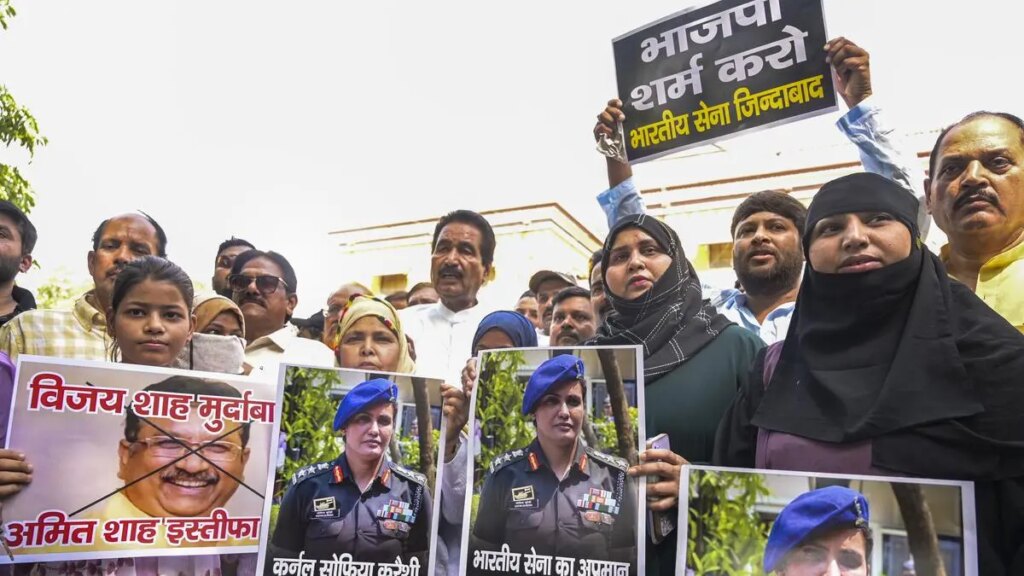Dear readers,
When Prime Minister Narendra Modi addressed the nation on May 12, following air strikes against terror hubs in Pakistan, he didn’t invoke the usual tropes of the Line of Control or the Line of Actual Control. Instead, he reached for a line etched deep in Hindu mythology: the Lakshman Rekha.
“India’s Lakshman Rekha against terrorism is absolutely clear,” he declared. “India will respond and definitely respond if hit by a terror attack again.” Thus, the mythological boundary drawn by Lakshman in the Ramayana became the rhetorical centrepiece of Modi’s 27-minute speech. The original rekha, as legend goes, was a protective perimeter drawn around Sita, which she was warned not to cross. She did, of course, to give alms to a sage (Ravana in disguise), and was promptly abducted. A cautionary tale about boundaries, disobedience, and dire consequences.
Thanks in part to Ramanand Sagar’s teleserial Ramayan, the term Lakshman Rekha is now deeply ingrained in almost all Indian languages as well as in the political lexicon. It has come to signify any moral, political, or rhetorical boundary—crossed often, regretted occasionally.
And like most good metaphors, this one travels well—from epics to politics, from coalition dharma to courtroom drama. Take Shashi Tharoor, for instance. When the Congress MP from Thiruvananthapuram made comments that appeared to back the government’s line on Pakistan, party colleagues accused him of breaching the Lakshman Rekha. Tharoor clarified that he was speaking in a “personal capacity”. Whether that line was crossed remains debatable, like everything else in Indian politics.
Yet irony thrives in these grey zones. Tharoor, supposedly out of line, was soon part of an all-party delegation tasked with exposing Pakistan-sponsored terror abroad. Apparently, crossing lines can sometimes get you a boarding pass.
But what exactly is the Lakshman Rekha in politics? A moral compass? A party whip? A moving target? Some leaders get a long rope after offensive remarks; others get a police case for a tweet.
Consider Madhya Pradesh Minister Vijay Shah, who made derogatory remarks about Colonel Sofia Qureshi, one of the faces of Operation Sindoor. He faced an FIR, made a public apology, and performed a quick round of political penance. The BJP’s National Democratic Alliance partner Chirag Paswan, while condemning Shah’s remarks, stopped short of demanding action: “If someone from my party had spoken like this, I’d have expelled them for life… But I’m only part of the alliance, I can only suggest.” Translation: I know where my own Lakshman Rekha lies.
Flashback to 2012. In Bihar, when Nitish Kumar’s Janata Dal (United) accused the BJP of poaching MLAs, then Deputy Chief Minister Sushil Kumar Modi said the BJP would respect the Lakshman Rekha of coalition dharma. In 1995, when Samajwadi Party supporters assaulted Mayawati in the infamous Lucknow guest house incident, political pundits declared the Lakshman Rekha of alliance politics had been shattered. Mulayam Singh Yadav later admitted that the episode had turned him into a political outcast. Some lines, once crossed, cannot be recrossed.
Southern politicians haven’t shied away from the term either. When former BJP chief Bangaru Laxman was caught accepting a bribe on camera in 2001, a political cartoon riffed on his name with the caption: “crossing the line”. Eleven years later, he was convicted.
The Lakshman Rekha resurfaced in the AIADMK-BJP alliance turbulence of 2020–23. As ideological rifts widened, the AIADMK accused the BJP of stepping outside alliance boundaries.
The Congress, too, has walked the line. In 2010, as murmurs against its alliance with the DMK grew, the All India Congress Committee’s Ghulam Nabi Azad warned party members not to cross the line—even if the Congress is known for giving everyone a very long rope. In 2012, Mamata Banerjee, in peak fury against the United Progressive Alliance-II government (2009-14), reminded the Congress not to cross the Lakshman Rekha. Her subsequent exits, re-entries, and reinventions make you wonder: Was she drawing boundaries or erasing them?
Not everyone uses the metaphor responsibly. In 2013, BJP leader Kailash Vijayvargiya set off outrage with a comment blaming women for violence against them: “If you cross the Lakshman Rekha, you will be punished.” The backlash was quick, and he was forced to retract his statement.
Courts, too, have embraced the phrase. In 2021, the Madras High Court cited the need to maintain the Lakshman Rekha between the judiciary and the legislature. Later, Chief Justice of India N.V. Ramana urged all institutions to be mindful of their boundaries. Meanwhile, then Union Law Minister Kiren Rijiju gently reminded the Supreme Court—after it suspended the sedition law—not to overstep the Lakshman Rekha.
Cartoonists had plenty of ink to spill on the subject. R.K. Laxman of “Common Man” fame was often said to draw the real Lakshman Rekhas—lines politicians crossed only at their peril. Fellow cartoonist Keshav once remarked that Laxman “never crossed the limit, the elusive Laxmanrekha”. It’s no surprise that a collection of his work is titled Laxman, Rekhas. When the Maharashtra government announced a memorial for Laxman in 2015, Education Minister Vinod Tawde neatly summed it up: “His cartoons were the Lakshman Rekha politicians dared not cross.”
But if Laxman’s Rekha was drawn with sharp clarity, today’s boundaries are more like faint pencil marks—easy to erase and seldom retraced.
Are there any Lakshman Rekhas left in Indian politics? Or have so many lines been crossed that you can officially call it a post-boundary republic?
Write back with your comments.
Anand Mishra | Political Editor, Frontline
Source:https://frontline.thehindu.com/newsletter/poll-vault-anand-mishra/lakshman-rekha-politics-modi-vijay-shah-sofia-qureshi/article69610750.ece

